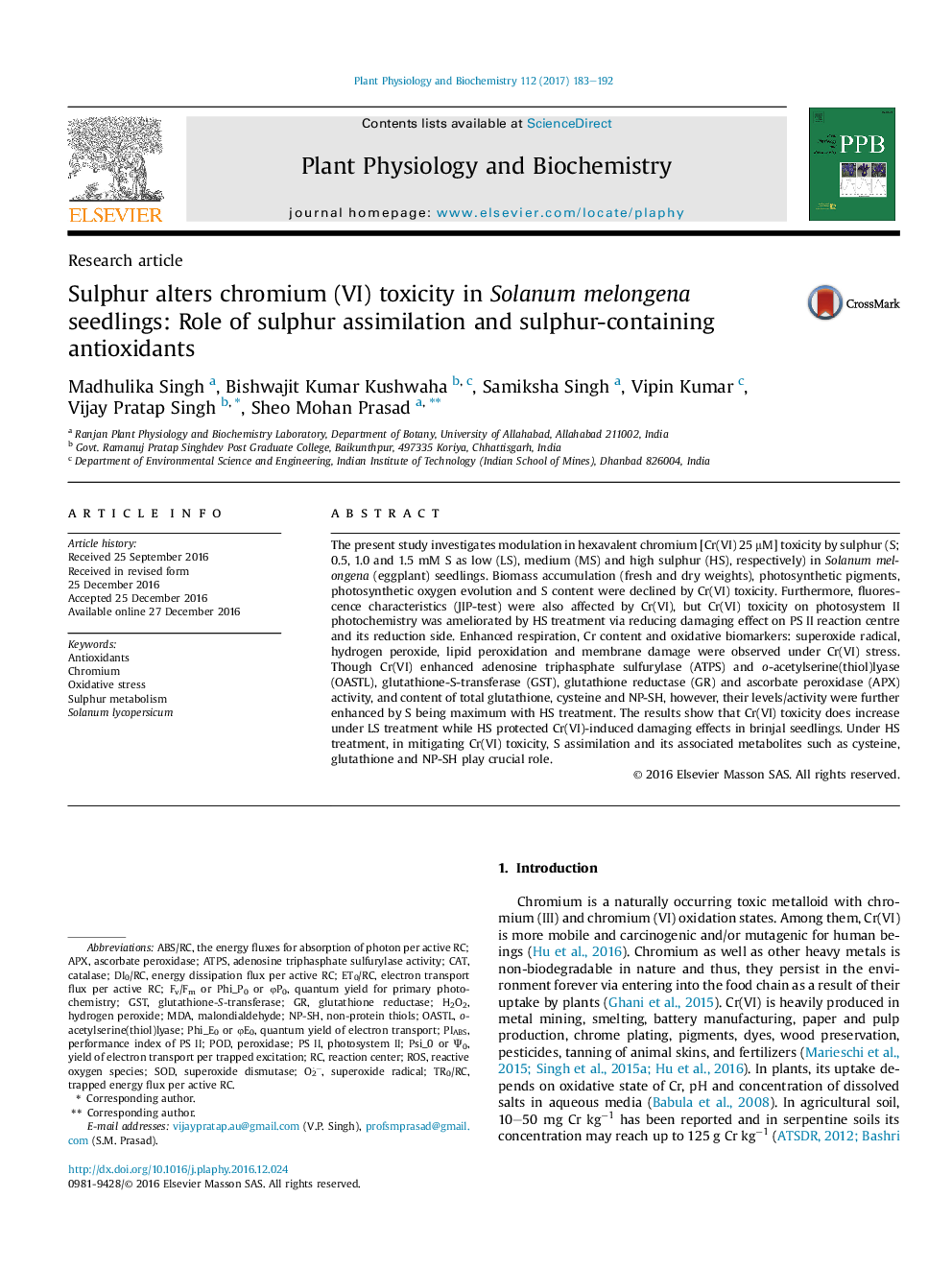| کد مقاله | کد نشریه | سال انتشار | مقاله انگلیسی | نسخه تمام متن |
|---|---|---|---|---|
| 5515503 | 1541909 | 2017 | 10 صفحه PDF | دانلود رایگان |

- Different S levels differentially regulate Cr(VI) toxicity in brinjal seedlings.
- Cr(VI) toxicity does increase under low sulphur treatment.
- Cr(VI) enhanced oxidative biomarkers, and effect was more harsh under low sulphur treatment.
- High sulphur protects brinjal seedlings against Cr (VI) toxicity.
- S assimilation and S-containing non-enzymatic antioxidants seem to regulate Cr(VI) toxicity.
The present study investigates modulation in hexavalent chromium [Cr(VI) 25 μM] toxicity by sulphur (S; 0.5, 1.0 and 1.5 mM S as low (LS), medium (MS) and high sulphur (HS), respectively) in Solanum melongena (eggplant) seedlings. Biomass accumulation (fresh and dry weights), photosynthetic pigments, photosynthetic oxygen evolution and S content were declined by Cr(VI) toxicity. Furthermore, fluorescence characteristics (JIP-test) were also affected by Cr(VI), but Cr(VI) toxicity on photosystem II photochemistry was ameliorated by HS treatment via reducing damaging effect on PS II reaction centre and its reduction side. Enhanced respiration, Cr content and oxidative biomarkers: superoxide radical, hydrogen peroxide, lipid peroxidation and membrane damage were observed under Cr(VI) stress. Though Cr(VI) enhanced adenosine triphasphate sulfurylase (ATPS) and o-acetylserine(thiol)lyase (OASTL), glutathione-S-transferase (GST), glutathione reductase (GR) and ascorbate peroxidase (APX) activity, and content of total glutathione, cysteine and NP-SH, however, their levels/activity were further enhanced by S being maximum with HS treatment. The results show that Cr(VI) toxicity does increase under LS treatment while HS protected Cr(VI)-induced damaging effects in brinjal seedlings. Under HS treatment, in mitigating Cr(VI) toxicity, S assimilation and its associated metabolites such as cysteine, glutathione and NP-SH play crucial role.
Journal: Plant Physiology and Biochemistry - Volume 112, March 2017, Pages 183-192